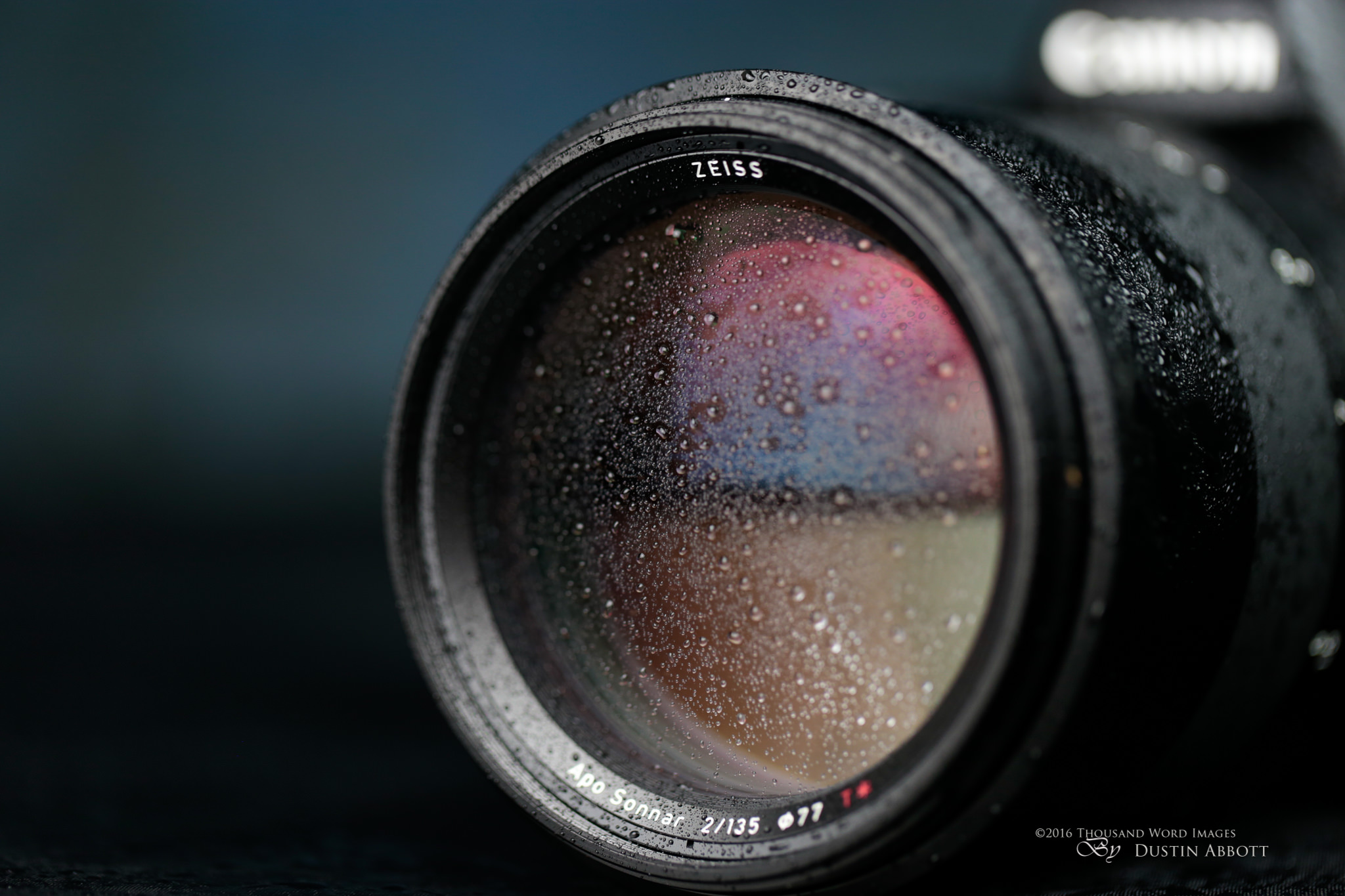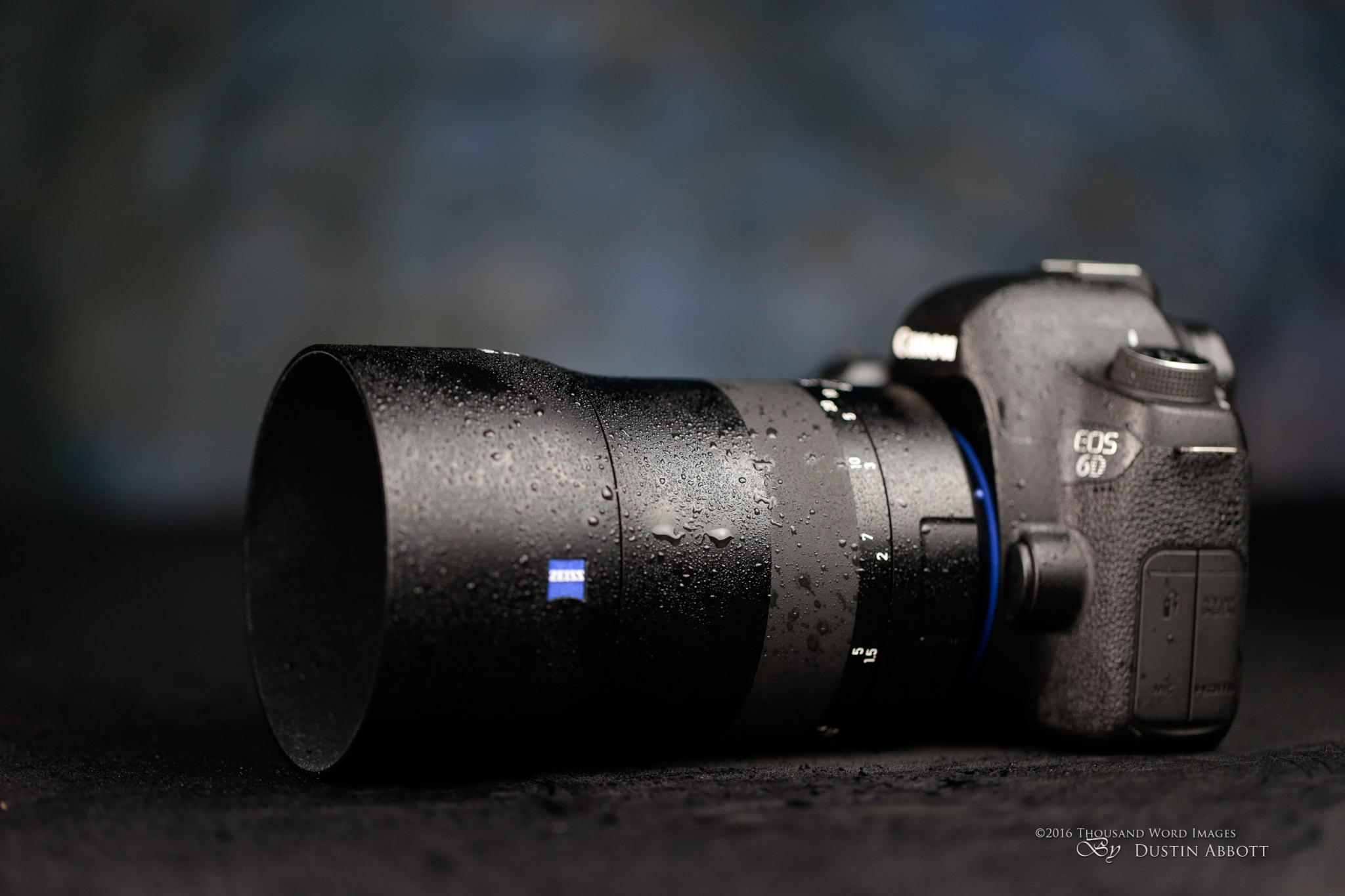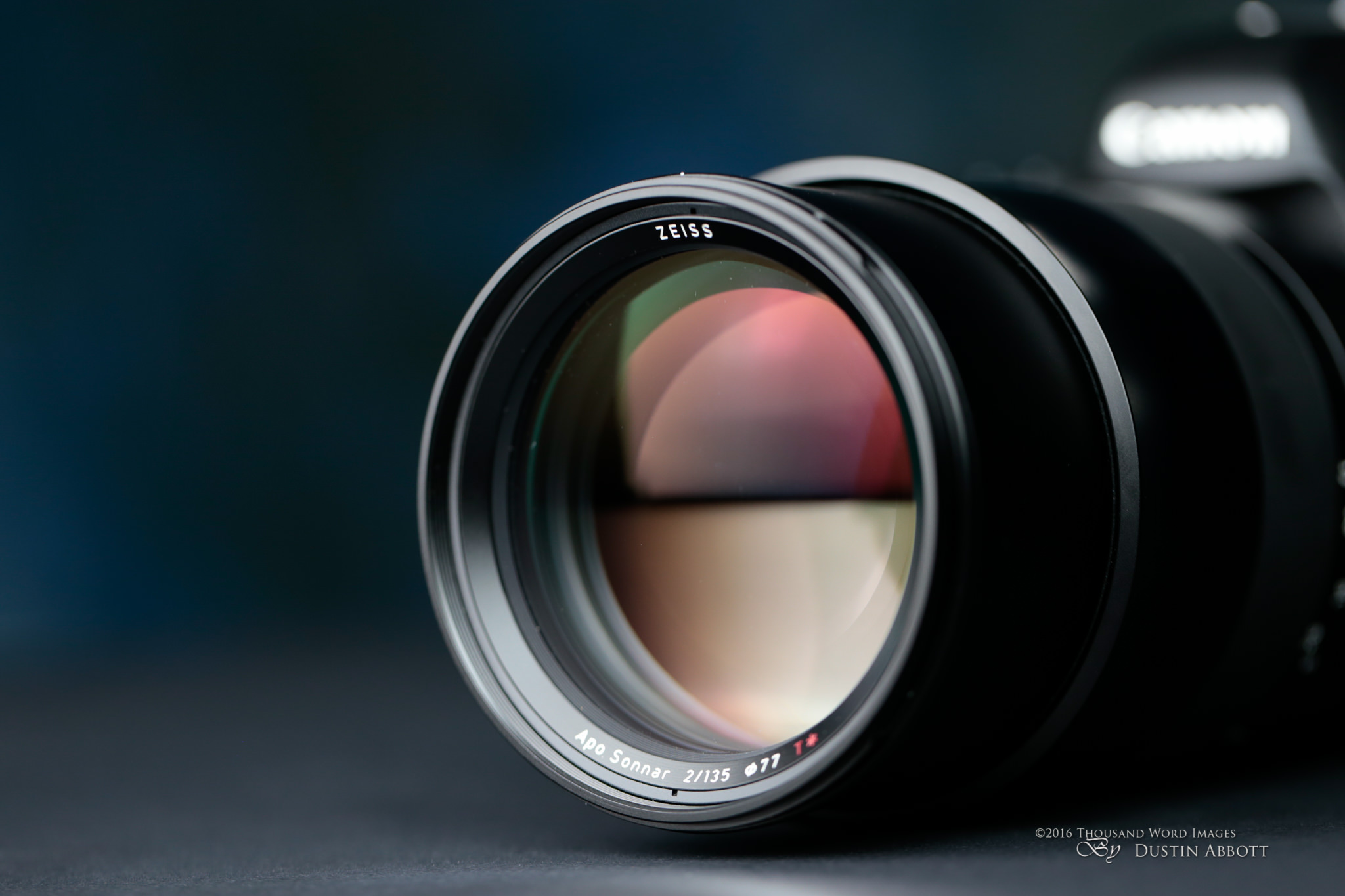A Little Bit of Perfect…For Some
When the Milvus line launched in 2015 there were six concurrent lens releases. Of those six, two were brand new lenses replacing very different lenses in the “Classic” lineup (1.4/50mm and 1.4/85mm). Four others were “reskinned” lenses built around existing optical formulas but with a new look and build. But fast forward to September of 2016 and what Zeiss calls the “second wave” of the Milvus line. Two of these lenses are once again refreshes of existing optical formulas, though these two lenses are already some of Zeiss’s very best: the 2.8/15mm and the 2/135mm. The Milvus 2.8/18mm is a brand new lens, and I have it in hand and will be releasing my review of it shortly. Today’s review is of one of my absolute favorite lenses ever from Zeiss; the Zeiss Milvus APO Sonnar 2/135mm. This lens is what I like to call a “little bit of perfect.”
I recognize that this lens is not for everyone despite its near optical perfection, so let me get the qualifiers out of the way right up front. The Milvus 135mm is heavy, expensive, and manual focus only. If that rules you out, feel free to stop reading now. If you choose to read on, be warned: the image quality from the Milvus 135mm is addictive…and just might convert you!
Check me out on: Google+: | Facebook: | Twitter: | Flickr: | 500px: | Sign Up for My Newsletter :
Prefer to Watch Your Reviews? Click Below!
A Chance for the Spotlight
When Zeiss sent me the 2/100mm lens for review they offered to let me have a sneak peek at an unreleased lens. I’d be a fool to pass up an opportunity like that, and my Momma didn’t raise no fool! I said “yes”, but literally didn’t know what I was getting until I rather impatiently opened up the box that FedEx brought to my front door. Inside I found the Milvus 135mm. I was delighted that this lens received the Milvus treatment, as it is truly a special lens. It’s predecessor, the “Classic” APO Sonnar 2/135mm was the first Zeiss lens I formally reviewed (you can read my review here), and it was a revelation. It came shortly before the first Otus lens, and after the Otus line was released many (myself included) kind of considered the Sonnar 2/135mm to be an “unofficial” Otus lens because it truly was an exceptional optical instrument in the same vein of those lenses. You can criticize the price, the fact that it is manual focus only, or perhaps the weight, but there just isn’t anything to criticize optically. It is pretty much flawless. In some ways the lens was caught in “no man’s land”; it wasn’t officially an Otus lens (though it optically belongs), but neither was it a part of the first wave of the Milvus lenses (and thus missed out on the weather sealing and improved build). The Otus lenses grabbed the spotlight, and the Milvus line represents the future of Zeiss SLR lenses. Where did that leave the APO Sonnar 2/135mm?
Part of the second wave, apparently, and this second wave includes two of Zeiss’s very best lenses (which means two the world’s best lenses). I have yet to deliver my verdict on the new Milvus 18mm f/2.8 lens (stay tuned), but I’ve reviewed the Distagon 15mm f/2.8 (and it stands as the best wide angle lens that I’ve used thus far) and the APO Sonnar 135mm f/2 (and it along with the Otus 85mm are the best short telephoto lenses I’ve used). I’ve owned the Canon EF 135mm f/2L for some years, and had always considered it a pretty exceptional lens, so it came to me as pretty huge shock when the APO Sonnar 135mm just completely demolished it when I put the two lenses head to head. I even got accusations from readers that I had somehow fudged the results.
But other reviews verified my results, and I will do a fresh comparison in this review. The (now) Milvus 135mm builds on that amazing lens with an improved barrel design and coatings, and, of course, the now familiar exceptional Milvus build. The Milvus 135mm now looks a lot like the Otus lenses that it was so optically comparable to.
Build and Handling
Zeiss lenses are all metal and glass and have a unique density that no other lens quite has. They have a unique feel in the hand; you KNOW you are holding a Zeiss. The build quality surpasses any equivalent lens and feels designed to last for a lifetime or two. The only interruption of metal (a nicely anodized black with a satin finish) is the rubberized focus ring. The focus action is purely Zeiss, which is pretty much perfect. Beautiful damping, smooth movement, and just enough resistance to be able to locate and hold the right focus position. I break down the primary changes to the lens in this video segment:
Zeiss lenses have always been beautifully made, but the Milvus series upped the ante by implementing a Zeiss first: weather sealing. In typical Zeiss style this implementation is actually more thorough and rigorous than the competition. The lenses sport the standard rear gasket (though in a stylish Zeiss blue) but also have internal seals to help prevent in intrusion of dust or moisture. This is something that sets the Milvus 135mm apart from the competing 135mm available in a Canon mount; I’m not aware of any other of them having weather sealing. The Canon 135L certainly doesn’t, nor does the Samyang/Rokinon 135mm that I reviewed in early 2015.
There is a significant variation between the Canon and Nikon version of Zeiss lenses. The Canon versions (ZE) have an electronically controlled iris diaphragm for the aperture that functions just like any other lens. The Nikon versions (ZF) have the option to control the iris diaphragm electronically from within the body (though with slightly fewer “steps” at each aperture value), but also include a manual aperture ring. The extra trick for Nikon shooters is a nice one; you have the option to put the lens into “declicked” mode where there are no defined aperture positions and you can rack the aperture – useful for certain pulls in video use.
The Milvus 135mm has 11 elements in 8 groups and an aperture range of f/2-22. One strength of the Milvus 135mm relative to other 135mm lenses is its minimum focus distance (2.62’/80cm) which results in a 1:4 or .25x maximum magnification. This is a very strong figure, and one I find very useful. By comparison the 135L can only focus down to 3 feet (91.4 cm), which results in a significantly lower 1:5 (.19x) magnification ratio. Here’s a visual comparison of how much of a difference that makes:
The Milvus 135mm has nine aperture blades and retains a roundish aperture for a stop or two, but by f/5.6 the nonogonal shape has pretty clearly emerged. The Canon (ZE) mount that I reviewed the lens on has a fully electronically controlled aperture iris; you set the aperture in the camera body (or allow the camera to choose in different shooting modes) just like any other lens. The only difference in operation is that the Zeiss has no autofocus. It has a 77mm front filter thread, and, while that is a bit larger than the 72mm threads of the 135L, 77mm is a much more common filter size and more likely to be shared with other lenses.
No one will accuse the Milvus 135mm of being light. The Classic (hard to call a three yer old lens a classic!) APO Sonnar was already a significant 33 ounces (930g), but this Milvus design has put on some extra weight and is now 39.6oz (1123g). The Nikon version is almost 65 grams lighter despite having the manual aperture ring, but neither version will be considered svelte. You will feel this amount of weight, and, depending on your camera body, the lens might feel a little front heavy when holding it with one hand. In normal shooting the lens feels hefty but still comfortable for me to use, but I’m also very accustomed to shooting with heavier gear. Weight certainly joins price as one of the few criticisms that one could offer.
The physical design has changed somewhat. The Classic APO Sonnar extended during focus at two points: before and after the zoom ring. The largest extension was before the focus ring. The new version has a fixed barrel with only the inner barrel extending near the front of the lens. It extends for 3cm, if you’re counting. While the overall length of the Milvus version is a bit longer, I suspect the length when fully zoomed out is about the same because of this. It helps the lens to be better sealed, however, and the lens is really stunningly crafted.
This is a manual focus only lens, but the quality of that manual focus is unparalleled. It is incredibly smooth and perfectly damped. The focus ring has about 270 degrees of throw, which is pretty much perfect for being able to accurately nail focus at a variety of distances. There’s enough friction to slow down and nail the right spot. The quality of the focus will definitely spoil you for inferior lenses. While I have a 6D body set up for my manual focus lenses, the new 5D Mark IV that I also shot the lens on just has the standard focus screen. The traditional focus screen doesn’t accurately show depth of field, and, as a result, I had to rely more on the focus confirmation chipset. I was relieved to discover that it was nicely calibrated, though, and I got accurate focus results through this method.
To see even more images of this beautiful lens, please visit the Image Gallery.
Image Quality
The Milvus 135mm is very close to optical perfection. I’ve had a chance to not only shoot it on the Canon 6D body that I have set up for manual focuse with an EG-S Precision Matte Screen but also with the brand new Canon EOS 5D Mark IV. While the Milvus 100mm f/2 lens that I recently reviewed had one flaw (some chromatic aberration), it’s hard to find any real optical flaw with the Milvus 135mm. It is worth noting that DXO Mark actually gives an edge to the APO Sonnar 135mm over the Otus 85mm f/1.4. It is incredibly sharp across the frame. In fact, let’s pause for a moment to directly compare the Milvus 135mm and the Canon 135L. The Canon has long been regarded as an exceptional optical performer (and it exceptional in many ways), but a head to head comparison reveals the Canon is strongly outclassed by the Milvus lens. I encourage you to watch this video to get an interactive breakdown of how the two lenses compare.
First of all, as noted the Milvus has a much stronger maximum magnification figure, so when we compare at minimum focus the Zeiss image is more magnified. This view only compares center of the frame performance (which favors the Canon), but even at this most advantaged situation the difference in the optical performance is pretty glaring.
The Zeiss is noticeably sharper, has much stronger contrast, and doesn’t exhibit any of the chromatic aberrations of the Canon. People have heard me mention “microcontrast” in reviews (often Zeiss ones) and wondered what exactly I was referring to. You will see it plainly in these series of comparisons. At high magnification one can clearly see that textures are more clearly rendered by the Zeiss lens. Where they come across as being somewhat flat and hazy in some areas on the Canon they have a very sharp, three dimensional rendering on the Zeiss.
When you compare the lenses at a distance where you can get a flat plane of focus you find the Zeiss is noticeably superior, well, everywhere. The difference in contrast and definition is obvious across the frame, and while the Zeiss is very consistent in its sharpness from edge to edge, the Canon’s sharpness falls off towards the edges. The 135L exhibits a fair bit of chromatic aberration as well. Note the indefinite haze along the edges of the text imprinted on the lenses on the Canon image and then compare it to the crisp delineation of Zeiss rendering. That microcontrast is very obvious too in the various textures on the lenses.
At further distances I noted a lot of the same trends. The area of focus here is the transformers on the utility poles, and it is easy to see the difference the improved contrast makes on the textures there and in the trees around them.
It is worth noting that in all of these tests I shot multiple apertures and could still see an advantage for the Zeiss even stopped down to f/5.6.
The only real optical weakness for the Milvus 135mm is some veiling when the sun is put in the corner of the frame. I list this as a flaw, but some may find it a strength, as the veiling has a very artistic mild prismatic effect that, used properly, will add to rather than detract from the image. There isn’t really any ghosting artifacts at all, so it handles much better than the Canon 135L. This series of shots shows the progression of the veiling when the sun is put in the frame. The Otus lenses retain stronger contrast than the Milvus 135mm in this scenario, though.
This prismatic veiling can be used to artistic effect if desired, though. Look at these portraits.
In this set I’ll show the out of camera look and then a minor tweak to restore contrast.
Only you can decide if this is a desirable or undesirable quality for you.
There’s literally nothing else to criticize. The amount of contrast, sharpness, and color rendition is shockingly good. Distortion is near non-existent (this showed up in the real world test where I could definitely see the distortion on my 135L). There is some vignette at f/2 (about 2 stops in the corners), but it moves into the frame in an almost perfectly linear fashion and results in an often useful, flattering result. I don’t find that I’m interested in correcting it very often. Stopping down to f/2.8 brings it down to less than a stop in the extreme corners.
Chromatic aberrations just don’t exist, and that makes images look even sharper. I tested the lens on the 5D Mark IV in a controlled environment to see how the Milvus 135mm handled the higher resolution. This shot was most informative. Take a look at the image and the crops – incredible!
In this setting I also compared it with a modern, excellent lens (Tamron SP 85mm f/1.8 VC). I was actually surprised by how notable the difference was in this comparison and was reminded of just how good the Milvus 135mm really is. This is a series of comparison crops from that comparison. The Tamron is clearly outclassed.
The only lens that I have on hand that [somewhat] competes at wide apertures is actually the Milvus 100mm (see the bottom for that comparison).
Perhaps most importantly, however, is that the lens does more than just perform well on chart testing. The lens has character, soul. I LOVE shooting candid photos of people with this lens (posed portraits are obviously exceptional, too). Backgrounds melt away, and the subject stands out with startling good three dimensional character. Faces seem to come alive, and I’ve had many moments where I looked at the LCD afterward and just said, “Wow!”
A moment on the 135mm focal length. It has both strengths and weaknesses. It is one of my favorite focal lengths for environmental portraits. It allows you to shoot from a fair distance away and still have great subject isolation. It creates really magical looking shots. It is a nice event focal length.
But it can also be too long for certain shooting situations (many indoor venues). There will be moments where you back up, and back up, and still discover it is too tight. I also find that for really tight headshots that it can have a little too much compression of the features. Some choose an 85mm or 100mm lens as their preferred portrait focal length for these reasons, but at the same time some of my favorite portraits are taken with the 135mm focal length. Look at the bottom of this review for a look at a few options to the Milvus 135mm.
Do yourself a favor and spend a few minutes in the Image Gallery from this lens. It is the greatest testament to it’s magic.
Conclusions
This little anecdote says it best. I had a nearly week long session of board meetings, and sat next to a friend of mine who is highly successful. He isn’t a photographer, per se, but has expressed some interest in getting some gear as he enters into a project trying to document some family history back in Jamaica. I happened to have this lens attached to the 5D Mark IV sitting with me as part of my responsibilities include doing headshots for the corporate website. My friend knows that I do reviews, so he asked what “toys” I was playing with at the moment. I explained to him about the lens that I was reviewing and the camera that I had actually purchased but was also reviewing. I highlighted how expensive everything was. Here in Canada the lens is $3000 and the camera is $5000. But then I told him about the kind of results I could get with the combo.
I shot some of the faces around the room and showed him on the back of the camera. We popped out the SD card and stuck it in his MacBook. He zoomed in…and in…and said, “Wow” over and over. He held the combo and tried focusing and taking some shots. When he felt the beautiful precision of that focus ring and the experience of it all, he [reluctantly] handed it back and said, “You’ve almost persuaded me”. I wasn’t trying to persuade him of anything, but anyone who enjoys beautifully made things is going to enjoy this lens. Something about Zeiss lenses brings a special pride of ownership. They are special.
The nature of Zeiss lenses makes them niche products. Some photographers aren’t interested in expensive, manual focus lenses. One consolation is that the Milvus version of the APO Sonnar has added weather sealing, optimizations, and better coatings while retaining an identical MSRP – $2199 USD. It’s expensive, yes, but undercuts the Otus line that it optically competes with by a large margin (it is about half the price of the Otus 85mm, for example). It is fairly large and definitely heavy, but this isn’t unusual in the current trend of full frame lens design. Despite these very real challenges the lens is a masterful option for those looking for the ultimate 135mm lens. It’s a joy to shoot with, and produces images that look amazing right out of the camera. If you pride yourself on doing minimal post processing, you will love the Zeiss Milvus APO Sonnar 2/135mm; images look great without being touched. If you are looking for a magical telephoto for shooting video, you will love this lens. It is special, and I’m so glad that it has found its way into the Milvus lineup. I’ve been eyeing a Milvus lens for my own kit, and this is very likely the one that I will choose. I guess I too am almost persuaded…
Pros:
- Superb optical performance that is rarely matched and never outdone
- No distortion or chromatic aberration
- Incredibly smooth and creamy bokeh
- Beautiful build and advanced weather resistance
- Perfect focus ring
- No price increase on Milvus version
- Amazing contrast at all focus distances
Cons:
- Manual Focus only
- Expensive
- Heavy
- Some veiling when the sun enters the frame
Alternatives:
The Canon and Nikon 135mm options are long in the tooth, but there are a few strong alternatives from third parties.
Ironically, the strongest alternative argument to the Milvus 135mm is the Zeiss Milvus 100mm f/2. Although the Milvus 135mm is the sharper lens, it is hard to really see that difference in the field. The Milvus 100mm exhibits chromatic aberrations that don’t exist on the Milvus 135mm, but it adds the benefits of twice the maximum magnification (1:2 vs 1:4, or .50x vs .25x). It is also smaller, lighter, and cheaper, and a lot of people love the lens. The lenses are close enough in real world use that I would suggest you choose your preference in focal length. The Milvus 135mm is the better lens optically, but perhaps the poorer lens in versatility. Bryan over at the Digital Picture has good comparison tool for showing chart tests of the optical performance. Here’s some crops from a real world comparison that I shot at f/2.
You can see the superior resolution and contrast if you look close, and the Milvus 135mm has less CA. But the performance is close enough that it would be hard to tell the difference when, say, shooting portraits. The shots from the 135mm will look a bit “closer” in the comparisons below.
While few photographers are directly cross-shopping Zeiss and Samyang, there is no question that the Samyang 135mm f/2 offers up a pretty remarkable budget alternative at 1/4 of the price. While it doesn’t quite reach the lofty standard of the Milvus 135mm, it is closer than most. It too is a manual focus only lens, though the biggest difference between the two lenses is in the ergonomics. The Samyang isn’t in the same ballpark as the Zeiss in the build department, and the little details (smoothness of the focus ring, precision of focus) detract a bit from the joy of use, but if you are on a budget you can cope with those things. If you are shooting with a Canon version there is no focus confirm or electronic connection to the camera with the Samyang, so there are a few handling issues that come with that. Still, if you are budget conscious and can deal with a few annoyances in operation, it is an impressive lens for the money.
Gear Used:
Canon EOS 5D Mark IV (5D4)
Canon EOS 6D DSLR Camera (Body Only)
Zeiss Milvus 2/135mm
Super Precision Matte Eg-S Interchangeable Focusing Screen
Adobe Lightroom CC Software for Mac and Windows (Boxed Version)
Adobe Photoshop Creative Cloud 1-Year Subscription
Alien Skin Exposure X (Use Code “dustinabbott” to get 10% anything and everything)
Purchasing your gear through B&H and these links helps fund this website and keeps the articles coming. Thank you for your support.
Great News! I can now offer a 5% discount on all purchases at Amplis Foto, Canada’s Leading Photographic Supplier. Please enter discount code: AMPLIS52016DA in your cart. It is good for everything in your cart, and is stackable with other coupons, too! It will take 5% off your entire order! Proceeds go towards keeping this site going and providing you with new reviews!
Check me out on:
Google+: | Facebook: | Twitter: | Flickr: | 500px: | Sign Up for My Newsletter :
DISCLAIMER: This articles contains affiliate links, which means that if you click on one of the product links, I’ll receive a small commission. As an Amazon Associate I earn from qualifying purchases. This helps support the review channel, this website, and allows me to continue to produce content for you. Thank you for the support!



















































